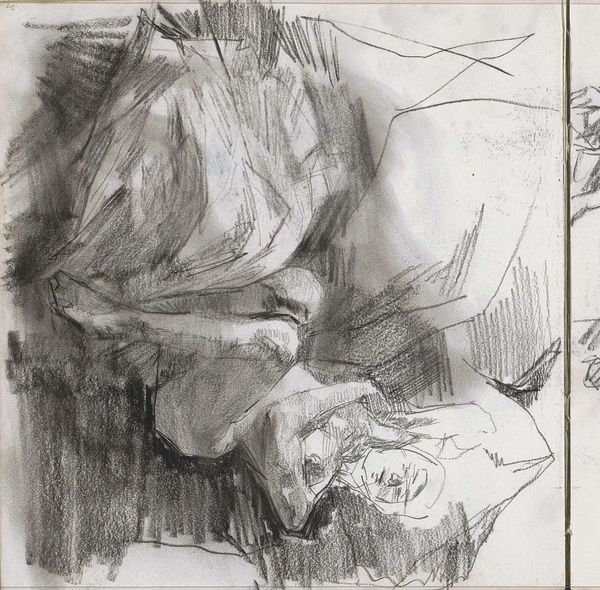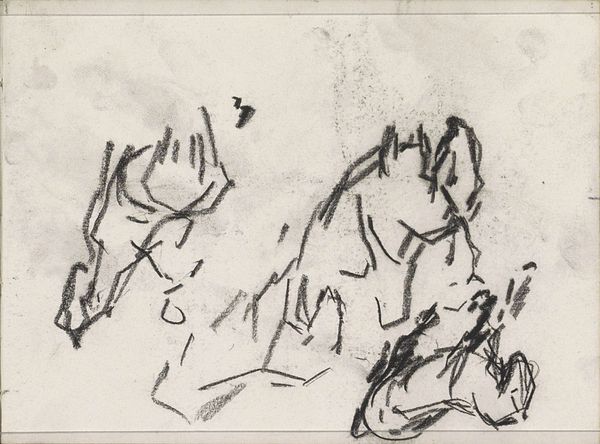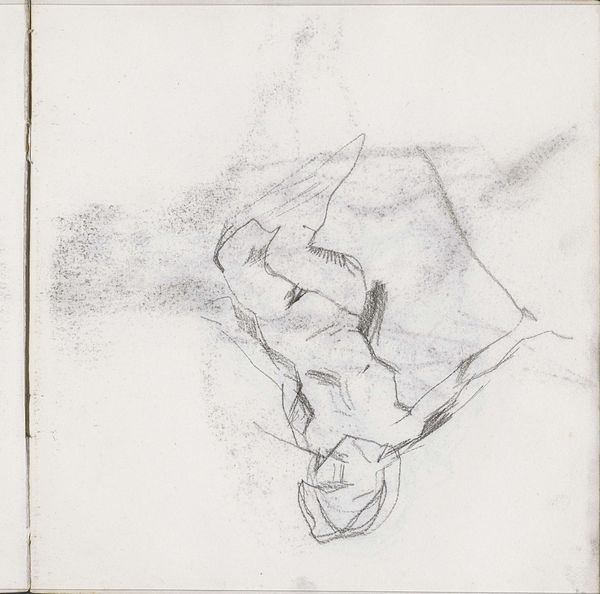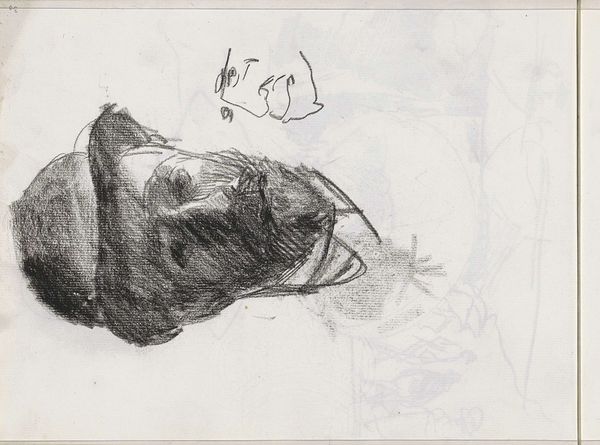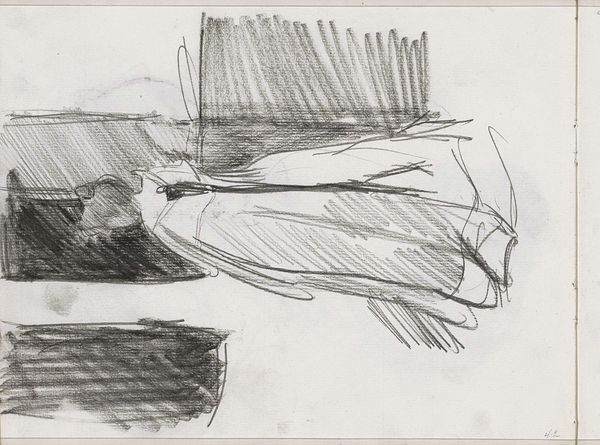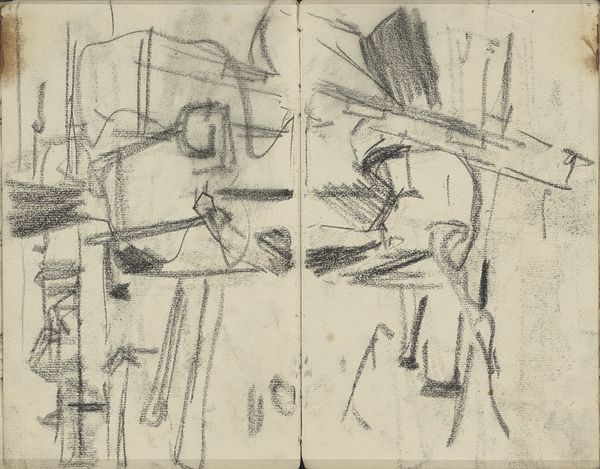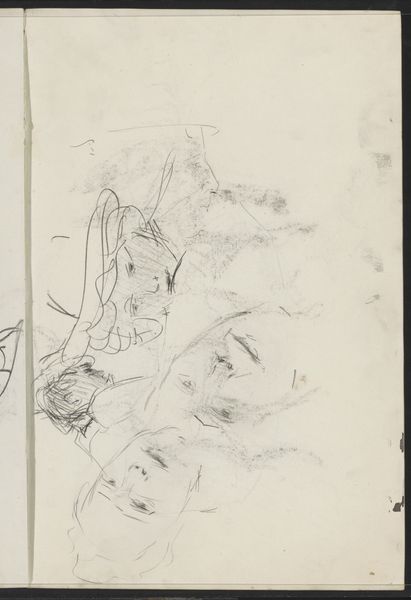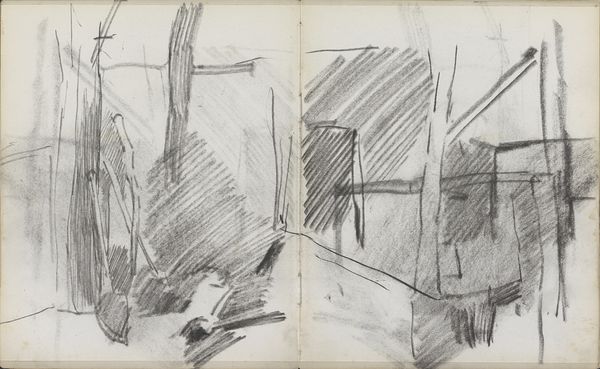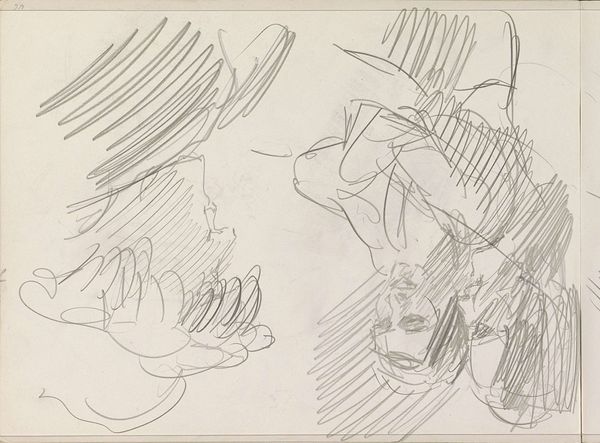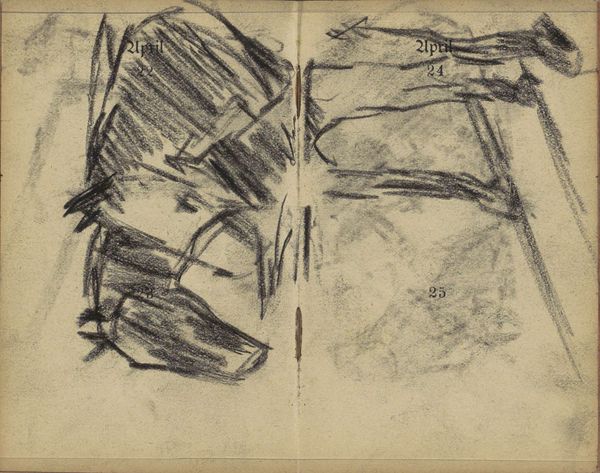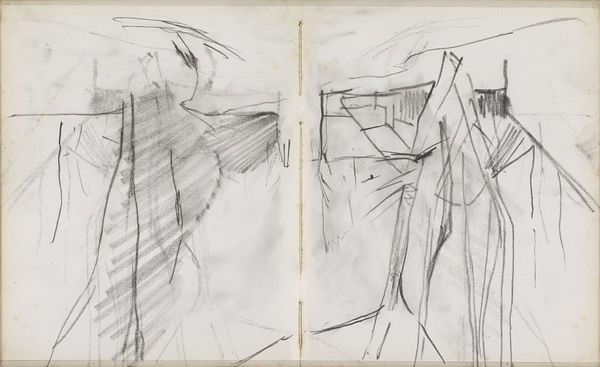
Copyright: Rijks Museum: Open Domain
Curator: Welcome. Today, we are looking at Isaac Israels' pencil drawing "Twee zittende vrouwen," or "Two Seated Women," which was created sometime between 1875 and 1934 and is currently held at the Rijksmuseum. Editor: The immediate impression is one of fleeting observation. The figures appear captured mid-gesture, their forms sketched with a rapid, almost restless energy. It has the intimacy of looking through the artist’s sketchbook. Curator: Indeed. Note the artist's decisive use of line—each stroke delineates form, conveying the sitters' posture. There's an inherent structure present, despite the seeming informality. Consider how the contrasting weights of the lines add depth and suggest form through shadow. Editor: But isn't the apparent spontaneity also telling? The women, perhaps, represent the emergent roles of women at the time: contemplating identity, resisting constraints, or seeking individual freedoms that they maybe wouldn't voice publicly. There’s something about their withdrawn posture that resonates with the broader context of women’s social confinement and internalized emotions. Curator: That interpretation imposes contemporary readings on a piece whose visual language prioritizes pure observation. To see social confinement in the rendering of shoulders and posture distracts from how Israels explored light and form through tonal contrast and confident draftsmanship. Editor: Can we divorce the act of observing and portraying a person from the sociopolitical gaze within which those acts unfold? Surely Israels was part of—and to some degree commenting on—a shifting understanding of identity and selfhood. We are seeing these women as an impression on the artist's lens and how he understands his role within those evolving definitions of womanhood. Curator: Perhaps...But I contend that the drawing speaks primarily of Israels’ concern with capturing visual phenomena through line, form, and shadow. Editor: I would say it speaks of that and, maybe more quietly, captures women suspended between social expectation and emergent identities. These layers enhance the impact of Israels’ visual record. Curator: Well, that gives me something to ponder as I revisit the drawing and how those concepts coexist on the page. Editor: As does the rendering for me. Perhaps a reminder that even the sketchiest gesture contains layers of meaning worth examining.
Comments
No comments
Be the first to comment and join the conversation on the ultimate creative platform.
